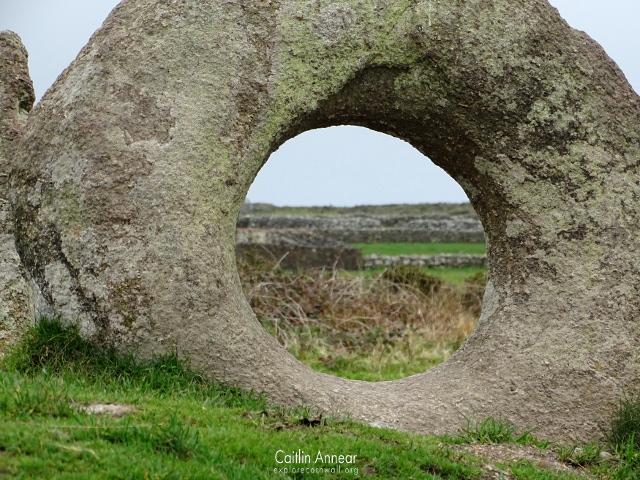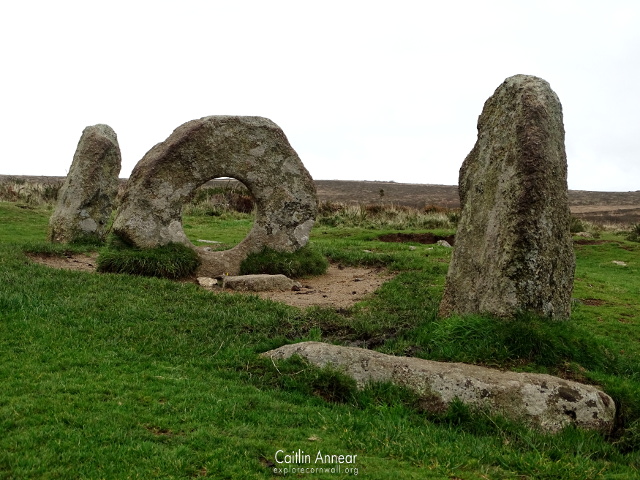In west Penwith the men-an-tol is a famous site made up of four standing stones.

Thought to be of Neolithic Early-Bronze Age origin (2500-1500 BCE) the exact nature of what it was built for is a mystery. The name comes from the Cornish ‘stone of the hole’.
The first mention of these stones was in the 18th century when the stone was ‘famous for curing pains in the back by going through the hole, three, five, or nine times’. A local farmer at the time stated that he knew of people who went threw the hole in an attempt to cure back pains and parents would send their children in for rickets. Other holed stones were the site of courtship rituals, although there are no records of this happening here.

Other examples of holed stones were often part of a larger structure and evidence of other stones nearby suggest that this may be the case, possibly forming a stone circle of sorts. Whilst there are several other holed stones in Cornwall, this has the largest diameter at 51cm.
Access is free to all alongside a public footpath.
There is a small car park on the road between Morvah and Penzance, just south of the site. It isn’t far up the footpath from here.
Borlase, W. (1769) Antiquities of Cornwall. 2nd edn.
Cornish Ancient Sites (2020) Men-an-Tol. Available at: https://www.cornishancientsites.com/ancient-sites/men-an-tol/.
Cornwalls (2020) Men-An-Tol Holed Stone. Available at: https://www.cornwalls.co.uk/history/sites/men_an_tol.htm.
Preston-Jones, A. (1993) Men-an-Tol. Available at: https://map.cornwall.gov.uk/reports_event_record/1993/1993R010.pdf.
